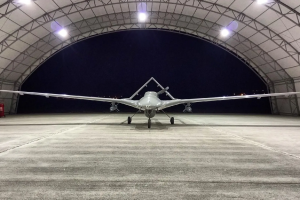Turkey has a growing number of UAVs and pilots, totaling 68,647 UAVs and 1,536,993 pilots as of September. The UAV Tracking and Traffic Management System Project strives to ensure safe integration of UAVs in airspace.
In a recent statement, Turkey’s Minister of Transport and Infrastructure, Uraloğlu, highlighted the remarkable growth in the number of unmanned aerial vehicles (UAVs) and licensed UAV pilots in the country. This surge is largely attributed to enhanced training programs and initiatives by the Directorate General of Civil Aviation (DGCA) aimed at bolstering civil aviation standards.
As of September, the total number of UAVs registered in Turkey has risen by 12.5%, reaching an impressive 68,647. Meanwhile, the number of licensed UAV pilots has also increased, with a 6.6% growth bringing the total to 1,536,993. Uraloğlu emphasized that this growth is indicative of the rising popularity and versatility of UAV technology across various sectors.
Every year, between 5,000 and 8,000 new UAVs are registered, facilitated by a streamlined registration system developed by the DGCA. This system simplifies the processes for obtaining permits and conducting flights, making it easier for operators to comply with regulations.
The applications for UAVs are diverse, ranging from agricultural spraying and aerial photography to cinema production, mapping, traffic monitoring, security, logistics, and even healthcare.
Uraloğlu also announced the launch of the UAV Tracking and Traffic Management System Project, which aims to integrate UAV operations into Turkey’s existing airspace. This initiative will promote safe, efficient, and environmentally friendly UAV management without the need for additional hardware on the vehicles. “Our goal is to eliminate safety and security issues associated with UAV operations,” Uraloğlu stated, reinforcing the commitment to safe airspace management.
As UAV technology continues to evolve, Turkey is positioning itself as a leader in the field, ensuring that both the vehicles and their operators are equipped for a future of innovation and growth in civil aviation.






